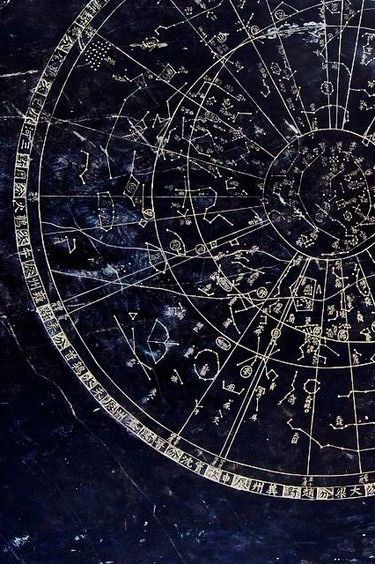#gigantes
Ουρανος
Ouranos was the primordial god of the sky. The Greeks imagined the sky as a solid dome of brass, decorated with stars, whose edges descended to rest upon the outermost limits of the flat earth. Ouranos was the literal sky, just as his consort Gaia was the earth.
Ouranos and Gaia had twelve sons and six daughters. He locked the eldest of these - the giant Kyklopes and Hekatonkheires - away inside the belly of Earth. Gaia suffered immense pain and persuaded her Titan sons to rebel. Four of these positioned themselves at the corners of the world, ready to grasp their father as he descended to lie with Earth, while the fifth, Kronos, took his place in the centre and there castrated Ouranos with an adamantine sickle. The sky-god’s blood fell upon the earth, producing the avenging Erinyes and the Gigantes.
Post link
There were quite a few types of giants in Greek mythology (including our last boy the cyclops), but the gigantes were the most famous and exemplative of their kin. They even lend their name to the word giant. Originally the “gigant” didn’t relate to size but rather their origin: they were earth-born. Gaia (or Ge/Gi) birthed them straight from the ground. Gigantes erupted from the surface like reverse meteors intent on storming Olympus. Their kind had no women. Instead they came into the world fully formed and armed. Of course, they failed. They were killed by the gods and sealed beneath islands or into volcanoes. From their ashes came a race of humans just as violent, the Thracians. Or so the Greeks said. Volcanic activities were usually associated with the gigantes like the Phlegraean Fields in Italy.
The earliest of their depictions have them as being spear-wielding men. Normal men, for the most part. Some, like Homer’s Odyssey, claim that they were in some way more brutish or bestial than human beings and their gods, as the Laestrygonian giants were “looking not like men but like the lawless Gigantes.” To reflect this, they were sometimes given less advanced armaments like animal furs and rocks. The last big change to the gigantes were their distinctive snake feet. As said before, the giants were born directly from the earth, like the Athenian Kekrops and spartoi. Snakes (and dragons) too were thought to be born directly from the Earth, so giving them snake for feet was a sort of visual metaphor for their birth that inevitably lost its meaning and simply became a trait of theirs.
Once Christianity became the dominant religion of Greece, the gigantes did not leave. Instead they changed enemies. After all, this is just one god, it’s bound to be easier than fighting all the rest! Right? …right?
This gigant is of the older type. Based on the standards of his brothers he is a veteran for surviving two charges on Olympus. To show he’s not just human, his skin is closer to stone with scars showing up like cracks. If you were to touch him, his hair would be like fiberglass and his entire body hot to the touch, for molten rock flows in his veins in the place of blood. His dinged up armor is inspired by Peter Connolly’s The Legends of Odysseus for the Bronze-Age aesthetic. His shield also used to have a snake on it for his mama, but it got blown asunder by a thunderbolt. He had to skin an entire cow for a replacement. And… I tried. I tried to make the snake-legs work, but I simply couldn’t. Perhaps one day when I am strong enough.
Post link

Aphrodite, Cupid and Ares; Lambert Sustris, 1548-1550
Aphrodite; also known as Cytherea (Lady of Cythera) and Cypris (Lady of Cyprus.)
Origin: Greek mythology.
Goddess of love, beauty, pleasure, and procreation.
Roman equivalent is goddess Venus.
Abode: Mount Olympus.
Symbol: Dolphin, Rose, Scallop Shell, Myrtle, Dove, Sparrow, Girdle, Mirror and Swan, the Sea, pomegranates, sceptres, apples, Rose trees, lime trees, clams, and pearls.
Lovers: Hephaestus, Ares, Poseidon, Hermes, Dionysus, Adonis and Anchises.
Parents: Zeus and Dione.
Siblings: Ares, Athena, Apollo, Artemis Dionysus, Hebe, Hermes, Heracles, Helen of Troy, Hephaestus, Perseus, Minos, the Muses, the Graces, The Tree Nymphs, The Furies and the Gigantes.
Children: Eros, Phobos, Deimos, Harmonia, Pothos, Anteros, Himeros, Hermaphroditos, Rhode, Eryx, Peitho, Eunomia, The Graces, Priapus, Aeneas and Tyche (possibly.)
Like many of the Greek gods and goddesses, there is more than one story about her origins. According to Hesiod’s Theogony, she was born when Cronus cut off Uranus’s genitals and threw them into the sea, and she arose from the sea foam. According to Homer’s Iliad, she is the daughter of Zeus and Dione. According to Plato (Symposium 180e), the two were entirely separate entities: Aphrodite Ourania and Aphrodite Pandemos.
Due to her beauty, other gods feared that their rivalry over her would interrupt the peace among them and lead to war, so Zeus married her to Hephaestus, who, because of his ugliness and deformity, was not seen as a threat.
She played a role in the Eros and Psyche legend, and later was both Adonis’ lover and his surrogate mother. Many lesser beings were said to be children of Aphrodite.
Ancient Greeks identified her with the Ancient Egyptian goddess Hathor.
Other names: Acidalia, Cytherea and Cerigo.






